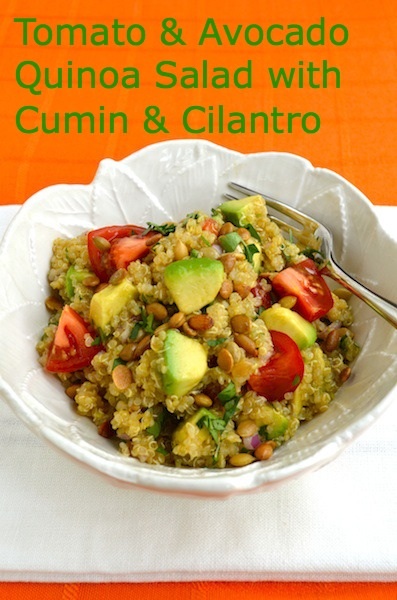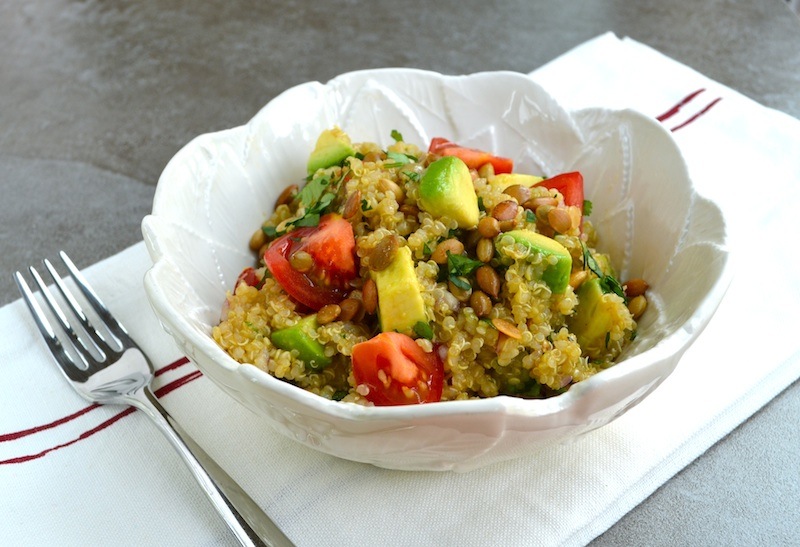For the past two weeks I’ve been adhering to a gluten-free diet and I’ve noticed a difference. Before I share the method behind my madness, I want to make sure the diet works for the reason I intended. No, a doctor didn’t tell me to start the diet, and no, I wasn’t diagnosed with celiac disease. At least not yet. Though, three people in my family have been recently diagnosed with celiac disease, so that definitely got me thinking. On the other hand, I could also just have a gluten sensitivity, like 18 million other people in this country.
I’m not trying to start a revolution or necessarily encourage you to go gluten-free, also. But at least for the next month, my recipes will be deliciously gluten-free without sacrificing taste. So far, cooking gluten-free at home has proven to be pretty straightforward and not horrible. It’s kept me healthier in the sense that some of the wheat-containing junk foods I might enjoy from time to time are now off limits. I’ll keep you posted.
You are going to thank me for this salad, since it’s the perfect all-in-one gluten-free dish for lunch, offering protein and fiber, whole grains, vegetables and fruits, and loads of flavor. I love that you can make it in advance and have meals ready for the next couple of days. It also serves as the perfect side dish in half-cup portions.
This salad tantalizes with poppy quinoa, finished with creamy avocado, and crunchy pepitas (saved to garnish right before serving so they keep their textural appeal).
Tell me, have you ever been on a gluten-free diet? Are you still? What are some of the lifesaving foods that you can’t do without?
Updated 3/25/13: Last Friday I asked one of my favorite dermatologists Dr. Jessica Wu about the relationship between gluten and acne and she said that since a high-glycemic diet is linked to acne, a gluten-free diet is likely to help with acne (assuming you’re eating healthy gluten-free options). Note that low-glycemic need not be gluten-free. It’s just that when you cut out many refined flour-based foods (i.e. baked goods and fried foods), you’re eating lower glycemic, too. So, as of this past weekend, I’m setting aside the gluten-free regimen and instead focusing on eating a low-glycemic diet. Thank goodness. Since my blog schedule is set, you can still look forward to gluten-free recipes in the upcoming weeks. More info to come.
 Tomato & Avocado Quinoa Salad with Cumin & Cilantro
Tomato & Avocado Quinoa Salad with Cumin & Cilantro
1 cup (173 g) dry quinoa, debris and discolored seeds removed
1 1/2 cups (355ml) organic or reduced-sodium vegetable broth
1 medium avocado, diced
2 tablespoons (28 ml) apple cider vinegar (2 teaspoons for the avocado, 4 teaspoons for the salad)
1 1/2 cups (270 g) chopped tomatoes
1/4 cup (83g) chopped red onion
2 tablespoons (4g) chopped cilantro
2 tablespoons (28 ml) extra-virgin olive oil
1/2 teaspoon ground cumin
1/4 teaspoon dried oregano
1/4 teaspoon salt
1/4 teaspoon freshly ground black pepper
1/4 cup roasted pepitas
Place quinoa in a medium saucepan, cover with water, and let soak for 5 minutes (to prevent stickiness). Stir, then rinse with cool water in a fine strainer and drain. Return quinoa to the saucepan and add broth. Bring to a boil on high heat; reduce heat to low, cover, and cook for 20 minutes until quinoa is tender and liquid is nearly all absorbed. Allow to rest 5 minutes, covered and undisturbed. Spread quinoa on a plate to cool it quickly.
Dice avocado, place in a medium bowl and gently toss with 2 teaspoons apple cider vinegar to prevent browning. Add quinoa and the remaining ingredients and stir. Chill for at least 30 minutes, up to 2 days. Stir in or sprinkle pepitas on top right before serving.
Prep time: 30 minutes
Cook time: 20 minutes
Makes 11 servings, ½ cup each
Nutrition Facts (per serving): 156 calories, 8 g total fat (1 g saturated fat, 0 g trans fat), 141 mg sodium, 0 mg cholesterol, 18 g total carbohydrate (4 g fiber), 4 g protein, 9% DV iron, 2% DV calcium, 5% DV Vitamin A, 9% DV Vitamin C.
You might also enjoy:
Quinoa and Black Bean Cakes with Cumin & Chile
Red Lentil Hummus with Cumin & Sriracha
